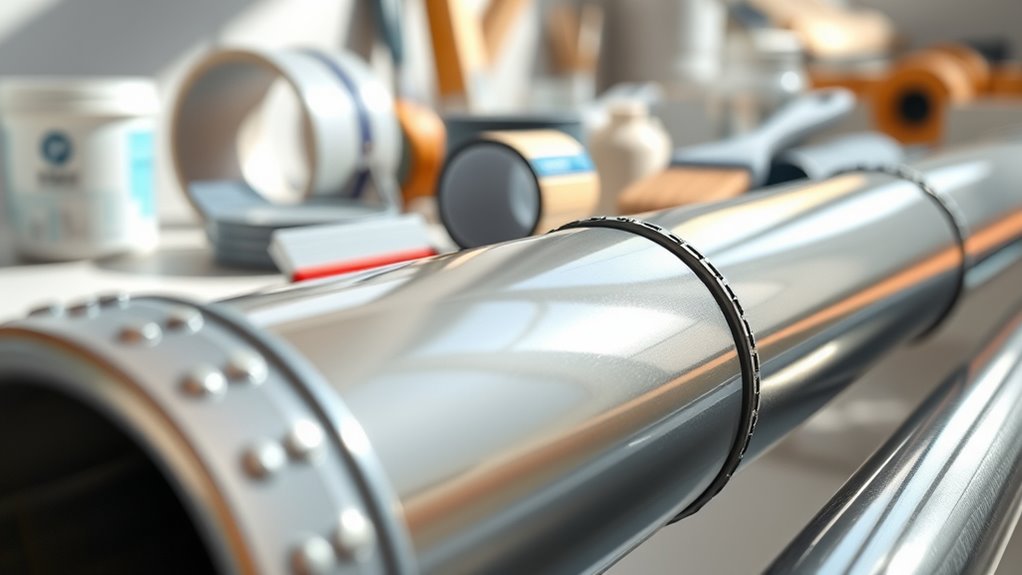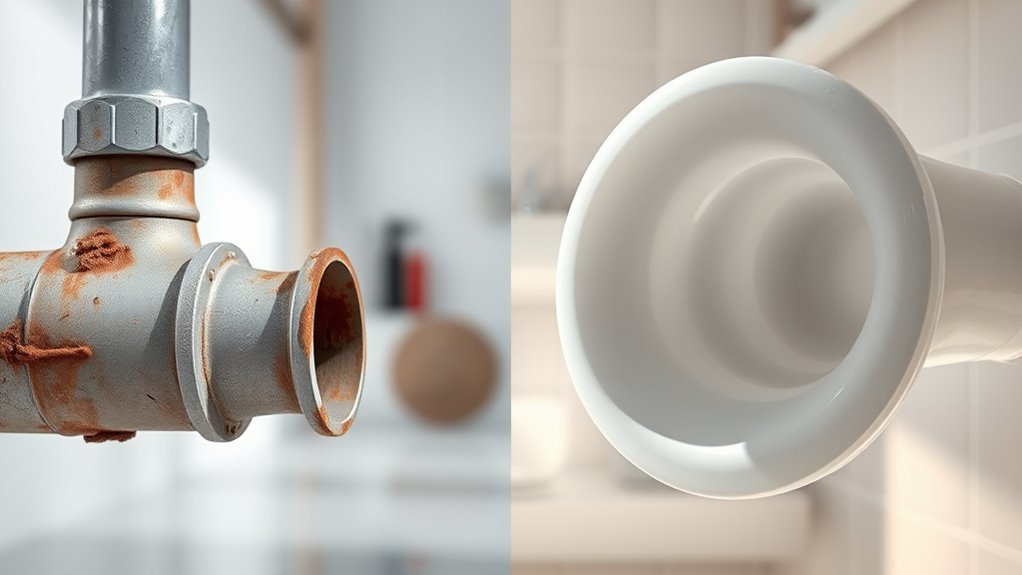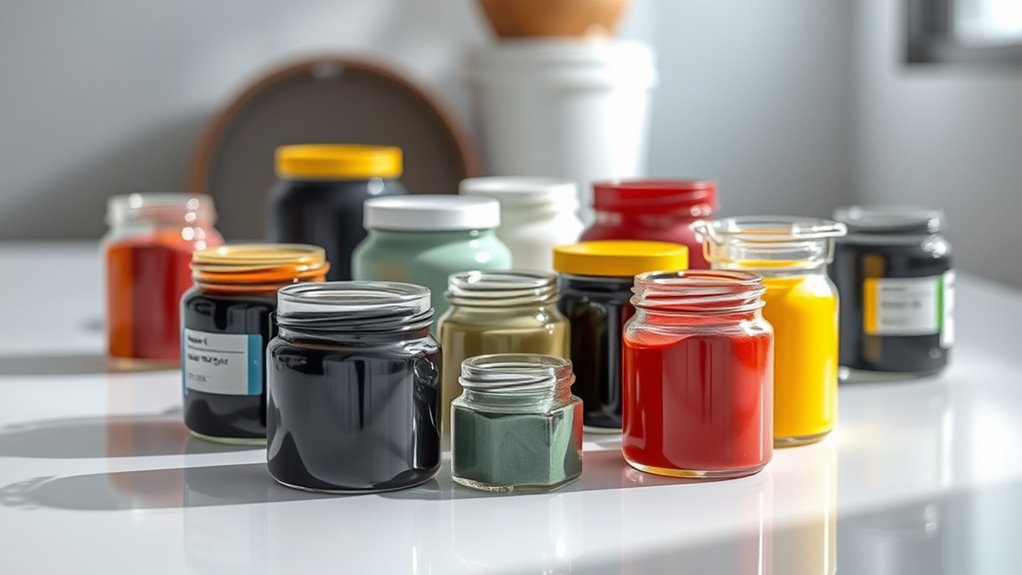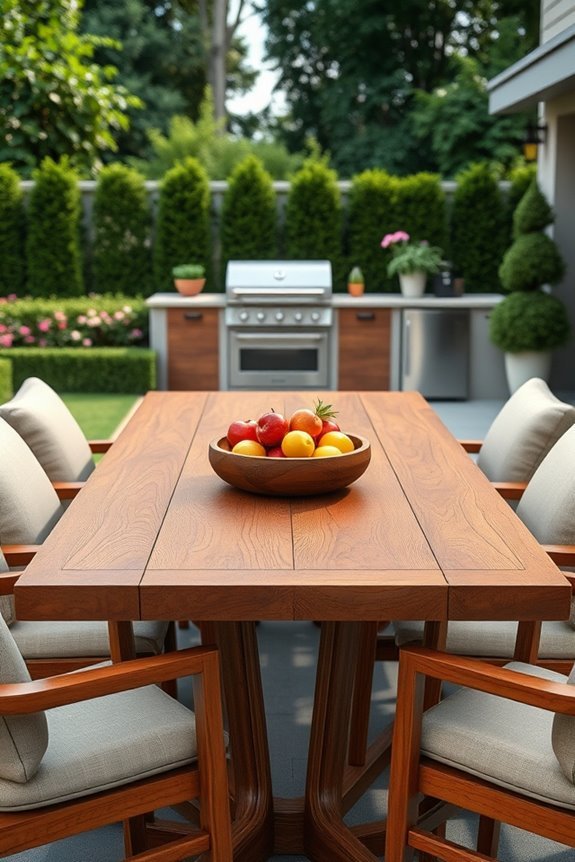How Much Does Epoxy Pipe Lining Cost? Average Prices and Factors Affecting Cost
Epoxy pipe lining costs typically range from $80 to $250 per linear foot, with average residential projects totaling between $3,000 and $6,000. Key factors affecting the price include the size and condition of the pipes, accessibility, and your geographic location. Additional expenses may be incurred for pre-lining repairs or if the plumbing system is complex. The application process is generally quick, which can lead to lower labor costs, making epoxy lining an appealing option for homeowners. For detailed cost breakdowns and considerations for your project, please explore further.
Understanding Epoxy Pipe Lining

Epoxy pipe lining is an effective solution for repairing aging or damaged pipelines without the need for extensive excavation. This method involves applying a durable epoxy resin to the inside of existing pipes, which creates a corrosion-resistant barrier. It requires only one access point, minimizing disruption to surrounding areas.
This process not only seals leaks but also prevents future deterioration, significantly extending the lifespan of various types of pipes, including metal and PVC.
Additionally, epoxy pipe lining typically takes less time than traditional pipe replacement, resulting in lower labor costs. If you’re looking to maintain the integrity of your underground utilities efficiently, epoxy pipe lining is a practical and cost-effective option.
Factors Influencing Epoxy Pipe Lining Costs
When considering epoxy pipe lining costs, several key factors significantly influence pricing.
The condition of your pipes is crucial, as it determines the level of preparation and repair needed before the lining can be applied.
Additionally, the size and scope of the project, including the length and diameter of the pipes, directly affect overall costs.
Understanding these elements helps ensure accurate cost estimates and effective planning for your epoxy pipe lining project.
Pipe Condition Assessment
A thorough pipe condition evaluation is crucial for accurately estimating the costs of epoxy pipe lining. This assessment reveals the current state of the pipes and directly impacts your project budget.
Here are the key factors to consider:
- Cracks and Leaks: Detecting visible damage that may necessitate further repairs.
- Corrosion Levels: Assessing corrosion extent to ensure proper lining adherence.
- Pipe Material: Understanding that different materials require unique preparation techniques and cost considerations.
- Blockages: Identifying any obstructions that could hinder the lining process.
Project Size and Scope
The size and scope of a pipe lining project directly impact the costs of epoxy pipe lining. Larger projects require more materials, labor, and time, leading to higher expenses.
Complex pipe systems with multiple bends or fittings also increase costs due to the need for specialized techniques and equipment. Additionally, if pipes are difficult to access, extra resources may be needed for safe and efficient completion.
Understanding these factors helps property owners accurately estimate their financial commitments and prepare for potential challenges during the epoxy pipe lining process.
Average Cost Range for Epoxy Pipe Lining
Epoxy pipe lining costs typically range from $80 to $250 per linear foot. This price varies based on several key factors:
- Pipe Size: Larger pipes need more materials and labor, which increases costs.
- Location: Labor rates can be higher in urban areas compared to rural ones.
- Extent of Damage: Heavily damaged pipes may require more extensive repairs.
- Accessibility: Pipes in hard-to-reach areas can lead to higher labor costs.
Understanding these factors can help you estimate the cost of epoxy pipe lining for your specific needs.
Cost Comparison: Epoxy Lining vs. Traditional Methods

If you’re searching for a cost-effective solution for pipe repair, consider epoxy pipe lining. This method stands out as a more affordable alternative to traditional excavation and replacement methods. Traditional repairs can be labor-intensive and costly, often leading to high overall expenses due to material and labor costs. In contrast, epoxy lining reduces disruption and is typically completed in a day, which also helps lower labor costs.
Here’s a quick cost comparison to help you decide:
| Method | Average Cost | Time Required |
|---|---|---|
| Traditional Repair | $50 – $250 per ft | 1-3 days |
| Epoxy Pipe Lining | $45 – $100 per ft | 1 day |
This comparison highlights the cost and efficiency advantages of choosing epoxy pipe lining for your repair needs.
Size of the Pipes and Its Impact on Cost
The size of pipes significantly impacts the cost of epoxy pipe lining.
Specifically, the pipe diameter and length affect the quantity of materials required and the complexity of installation.
Understanding these dimensions is crucial for accurate cost estimation and planning, ensuring you get the best value for your project.
Pipe Diameter Considerations
When planning an epoxy pipe lining project, the diameter of the pipes significantly influences costs. Here’s how:
- Material Costs: Larger pipes require more epoxy resin, increasing material expenses.
- Labor Requirements: Bigger pipes are more complex to line, demanding skilled labor and more time.
- Equipment Rental: Special equipment for larger diameters can lead to extra rental fees.
- Inspection and Prep: Wider pipes need thorough inspections and surface preparation, adding to project costs.
Length of Pipeline
The length of a pipeline significantly impacts the cost of an epoxy pipe lining project. Typically, longer pipelines require more materials and labor, leading to higher expenses. Contractors often charge on a per-foot basis, making the total length a crucial factor in cost estimates.
While shorter pipelines may have a higher cost per foot due to fixed overhead costs, the overall project tends to be less expensive. In contrast, longer pipelines can take advantage of economies of scale, potentially lowering the cost per foot.
Additionally, the complexity of the pipeline layout and necessary preparatory work can also influence pricing. Therefore, understanding the pipeline’s length is essential for accurate cost projections in epoxy pipe lining projects.
Condition of Existing Pipes
Evaluating the condition of existing pipes is crucial for assessing the feasibility and cost-effectiveness of epoxy pipe lining.
Here are the key factors to consider:
- Corrosion Levels: High levels of rust or deterioration may require extra preparation, which can increase costs.
- Cracks and Leaks: Any visible damage will likely need repairs before lining, affecting your budget.
- Pipe Material: Different materials require specific handling, influencing the overall pricing.
- Obstructions: Debris or buildup inside the pipes can complicate the process and lead to higher labor costs.
Conducting a thorough inspection will help you make informed decisions and accurately estimate the financial implications of your epoxy lining project.
Type of Epoxy Used

The type of epoxy used in pipe lining is crucial for effective repairs.
Different epoxy materials have distinct application methods, longevity, and durability.
Knowing these differences helps you choose the right epoxy for your pipe restoration project, ensuring optimal results.
Types of Epoxy Materials
When considering pipe lining systems, the choice of epoxy material is crucial for achieving durability and effectiveness.
Here are the key types of epoxy materials to consider based on your needs:
- Standard Epoxy: Ideal for general pipe repairs, offering good adhesion and reliability.
- High-Temperature Epoxy: Best for hot water pipes, designed to withstand elevated temperatures.
- Chemical-Resistant Epoxy: Perfect for industrial applications, with exceptional resistance to corrosive substances.
- Flexible Epoxy: Accommodates pipe movement and minimizes cracking, providing enhanced flexibility.
Selecting the right epoxy material ensures your pipe lining system remains effective and reliable for diverse plumbing needs.
Application Methods Explained
When considering epoxy pipe lining, it’s crucial to understand the different application methods to ensure optimal performance and durability.
The main techniques include:
- Spray Application: Epoxy is atomized and sprayed directly onto the pipe surfaces, providing a uniform coating.
- Inversion Method: A flexible liner coated with liquid epoxy is inverted into the pipe, allowing for complete coverage of the interior surface.
- Pull-In Method: The liner is pulled through the existing pipe, ensuring thorough application of the epoxy.
Choosing the right method depends on factors like pipe diameter, length, and the specific epoxy formulation.
Proper selection and execution are vital for effective epoxy lining.
Longevity and Durability Factors
When considering epoxy pipe lining, the choice of epoxy is essential for ensuring longevity and durability.
Here are the key attributes that enhance performance and cost-effectiveness:
- Chemical Resistance: High-quality epoxies withstand harsh substances, preventing deterioration.
- Flexibility: A flexible formulation accommodates pipe movement, minimizing cracking risk.
- Adhesion Strength: Strong adhesion to existing pipes boosts structural integrity.
- UV Stability: UV-resistant formulations protect against sunlight, ideal for outdoor applications.
Selecting the right epoxy is crucial for maximizing the benefits of pipe lining and ensuring long-lasting results.
Labor Costs and Their Variations
Labor costs for epoxy pipe lining can vary significantly based on several key factors:
- Job Complexity: More intricate jobs require skilled labor, leading to higher costs.
- Labor Expertise: Skilled workers command higher wages compared to less experienced personnel.
- Project Duration: Longer projects typically incur higher costs due to extended labor hours.
- Location: Urban areas often have higher labor rates compared to rural settings.
- Equipment Needs: Specialized tools and equipment can increase overall labor costs.
Understanding these factors can help you anticipate costs for your epoxy pipe lining project.
Geographic Location Considerations
Geographic location significantly impacts the cost of epoxy pipe lining.
Factors such as regional pricing variations, the difference between urban and rural areas, and local labor rates all play a crucial role in determining the overall expense.
For accurate budgeting and decision-making, it’s important to consider these location-based factors.
Regional Cost Variations
Epoxy pipe lining costs can vary significantly based on your location, which is crucial for homeowners and contractors to consider.
Here are the main factors influencing these costs:
- Labor Costs: Expect higher labor rates in urban areas compared to rural locations.
- Material Prices: The price of epoxy and materials can differ regionally.
- Local Regulations: Stricter regulations in some areas can increase installation costs.
- Market Competition: More competition in certain areas may lead to lower prices.
Being aware of these regional factors will help you budget effectively for your epoxy pipe lining project.
Urban vs. Rural Pricing
Pricing for epoxy pipe lining varies significantly between urban and rural areas.
In urban settings, costs tend to be higher due to increased demand for plumbing services and a concentration of specialized contractors. The availability of advanced technology and skilled labor can also drive up prices.
In contrast, rural areas often have lower costs because of reduced competition and lower overhead for contractors. However, these savings might be offset by logistical challenges, such as longer travel distances for service providers.
Understanding these geographic influences is key to estimating the cost of epoxy pipe lining services in your area.
Local Labor Rates
Local labor rates are a key factor in the cost of epoxy pipe lining projects.
These rates can vary significantly based on several factors:
- Regional Demand: Higher demand for plumbing services in certain areas can lead to increased labor costs.
- Cost of Living: Urban areas with a higher cost of living generally have higher labor rates compared to rural areas.
- Skilled Workforce Availability: A shortage of skilled labor in certain regions may result in higher charges for services.
- Local Regulations: Additional permits or certifications required in some areas can also impact labor costs.
Additional Services and Their Costs
When budgeting for epoxy pipe lining, it’s essential to consider additional services that can affect the overall cost.
Here are key factors to keep in mind:
- Pipe Inspection: This service, typically using a camera to evaluate pipe condition, can cost between $150 and $500 depending on the inspection’s scope.
- Necessary Repairs: If repairs to the plumbing are needed before lining, it can add several hundred to over a thousand dollars to your total cost.
- Warranties and Maintenance Packages: Some companies offer these options, which can also influence pricing.
Long-Term Savings From Epoxy Pipe Lining
Investing in epoxy pipe lining not only solves immediate plumbing problems but also delivers substantial long-term savings.
Here’s how it benefits homeowners and businesses:
- Reduced Repairs: The strong lining decreases the likelihood of leaks and the need for frequent plumbing repairs.
- Increased Property Value: A reliable plumbing system can enhance your property’s market value.
- Lower Energy Costs: Improved water flow can reduce heating expenses.
- Cost-Effective Installation: Minimal excavation means lower labor costs and less disruption.
Financing Options for Pipe Lining Projects
Homeowners and businesses looking to finance epoxy pipe lining projects have several options to consider:
- Home Equity Loans or Lines of Credit: Borrow against your home’s value for potentially lower interest rates.
- Personal Loans: Obtain immediate funds without collateral, suitable for various project costs.
- In-House Financing: Some companies offer payment plans, allowing you to pay off the project in installments.
- Local Government Programs or Grants: Check for available funding to assist with plumbing infrastructure improvements.
- Credit Cards: Use for smaller projects, keeping in mind that interest rates may be higher.
Evaluate the terms and conditions of each option to find the best fit for your financing needs.
Choosing the Right Contractor
Choosing the right contractor for epoxy pipe lining is crucial for your project’s success. Here are key factors to consider:
- Experience: Opt for contractors with extensive experience specifically in epoxy pipe lining to ensure quality results.
- Licensing and Insurance: Confirm that the contractor is properly licensed and insured to protect yourself and your property.
- Reviews and References: Check client testimonials and references to assess the contractor’s reliability and quality of work.
- Cost Estimates: Request detailed quotes from several contractors to compare pricing and understand the scope of work.
Warranties and Guarantees in Pricing
When considering epoxy pipe lining, it’s crucial to evaluate the warranties and guarantees from contractors, as these can significantly impact value and satisfaction.
Look for warranties that cover both materials and workmanship, typically lasting between five to ten years. Additionally, check for guarantees addressing any potential issues post-installation.
Carefully reviewing these documents can help protect against unexpected repair costs. By comparing warranty terms from different contractors, you can make an informed decision that fits your budget and expectations, ensuring a solid investment in your plumbing system.
Future Trends in Epoxy Pipe Lining Costs
As plumbing technology evolves, the costs associated with epoxy pipe lining are expected to change significantly.
Here are the key trends that will likely impact future pricing:
- Advanced Materials: New epoxy formulations that are more durable will reduce wear and increase the lifespan of pipe linings, potentially lowering future repair costs.
- Robotic Application: The use of automated systems for lining application will streamline the process, reducing labor costs and time, which can lead to lower prices for consumers.
- Sustainable Options: The growing demand for eco-friendly materials will not only appeal to environmentally conscious customers but may also lower disposal costs, making services more affordable.
- Tailored Pricing Models: Increased use of analytics will enable service providers to offer customized pricing based on specific project requirements, enhancing competitiveness and value for consumers.
These advancements are poised to make epoxy pipe lining solutions more cost-effective and efficient in the near future.
Conclusion
Epoxy pipe lining costs can vary significantly depending on several factors, including pipe size, the extent of damage, and the contractor chosen. On average, homeowners can expect to pay between $80 to $250 per linear foot for epoxy pipe lining. Factors like the complexity of the plumbing system, local labor rates, and the specific materials used can also affect the total cost.
It’s essential to explore financing options and get multiple quotes from contractors to ensure you find the best value. Staying informed about industry trends can help you make cost-effective decisions regarding your plumbing needs.



